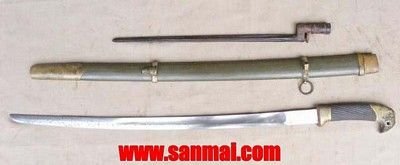I agree with the qualifier of relevant experience in other martial arts. Being a kendo instructor, I can tell you that experience in most other martial arts is almost pointless in kendo. When I learned kendo, my instructor taught what I would call 'kitchen sink' kenjutsu; legit techniques, but simply a mishmash of what he learned. I was also taught solo kata. With that little exposure to kenjutsu I can see huge differences in the way that a katana is used as compared to a shinai.Of course, it also helps (a really bunch) if you have some sort of frame of reference, such as other martial training, to ensure that you're not way out in left field. Most of the Reconstructionists, at least the first generation ones, have a fair amount of experience in other martial arts.
I just took my first steps into a Koryu kenjutsu/iai art and can see even more differences (going to my next class on Monday). Kendo is more relevant to that than taekwondo or karate is to kendo, and kendo's relevance to kenjutsu is just enough to take you in some very wrong, but seemingly right, directions if you had no living tradition.
So when you say, 'other martial arts,' I would only consider them relevant if they involve a similar weapon. I worked with a guy a couple of years ago who was essentially a three weapon fencer and an SCA fighter who wanted to collaborate on a project.
Nice enough gent, but there was so much wrong with what he was doing with a two handed weapon that I would be writing several paragraphs if I were to sum it all up. He was very quick to talk about studying with other historical fencing guys and working from historical documents. It was very evident that he had both a lot of training in three weapon fencing (saber in particular) and absolutely no training of any value in the historical stuff.
Reconstructing something that has essentially died out excepting the manuscripts is hard and I do take my hat off to people who do it in earnest. But I also think that a lot of training with people who train in a similar weapon with a living tradition is essential. Not being a reconstructionist, maybe I am mistaken, but that is how I see it.


